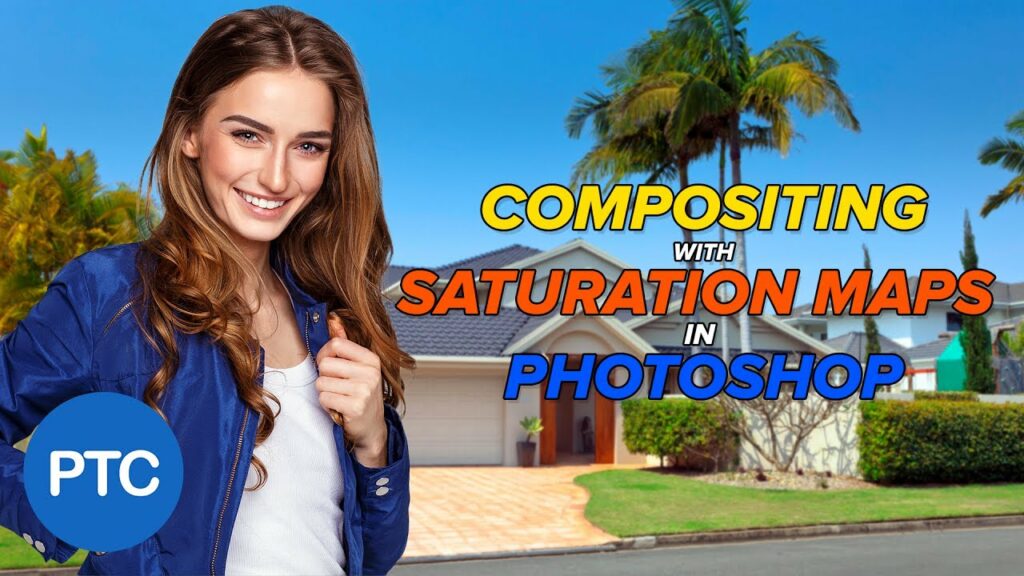Mastering Compositing: Unveiling the Power of Saturation Maps in Photoshop for Seamless Color Harmony

Introduction: In the ever-evolving world of digital artistry and compositing, achieving a harmonious color palette is a crucial aspect that can elevate a composition from ordinary to extraordinary. One advanced technique that empowers digital artists to fine-tune color balance and create seamless blends is the use of Saturation Maps in Adobe Photoshop. This article will delve into the intricacies of compositing with Saturation Maps, focusing on the innovative approach of matching saturation levels for a visually cohesive and professional result.
Section 1: Understanding Saturation in Digital Imagery To embark on the journey of compositing with Saturation Maps, it is imperative to grasp the fundamentals of saturation in digital imagery. This section will provide a comprehensive overview of saturation, explaining its role in color theory and its impact on the visual appeal of an image. From vibrant hues to muted tones, understand how saturation influences the perception of color in digital compositions.
Section 2: The Power of Photoshop: Saturation Maps Unveiled Adobe Photoshop, a powerhouse in the realm of digital design, offers an array of tools for sophisticated compositing. This section will introduce the concept of Saturation Maps in Photoshop, elucidating how these maps isolate the saturation values within an image. Delve into the intricacies of generating and interpreting Saturation Maps, unlocking their potential for precision in color manipulation.
Section 3: Compositing Fundamentals: Selecting and Blending Elements Before delving into the realm of Saturation Maps, it is crucial to establish a foundation in compositing fundamentals. This section will provide insights into selecting and blending elements seamlessly within a composition. Explore techniques for precise masking, layer blending modes, and layer adjustments that set the stage for the application of Saturation Maps.
Section 4: The Match Saturation Technique: A Step-by-Step Guide The heart of this article lies in the Match Saturation technique, a powerful method to ensure that composited elements seamlessly integrate with the overall color scheme. This section will offer a detailed, step-by-step guide on how to employ Saturation Maps to match saturation levels across different elements. From identifying saturation disparities to utilizing adjustment layers, follow the workflow for achieving impeccable color harmony.
Section 5: Leveraging Adjustment Layers for Saturation Control Within the realm of Photoshop, adjustment layers serve as indispensable tools for color correction and manipulation. This section will explore the specific adjustment layers – such as Hue/Saturation, Vibrance, and Selective Color – that play a pivotal role in utilizing Saturation Maps. Understand how these layers become the linchpin for achieving precise control over saturation levels.
Section 6: Real-World Examples: Case Studies in Match Saturation To provide a practical understanding of the Match Saturation technique, this section will present real-world case studies. Explore scenarios where compositing challenges are met with the finesse of Saturation Maps. From integrating foreground subjects into diverse backgrounds to achieving color consistency in complex compositions, witness the transformative impact of the Match Saturation technique.
Section 7: Advanced Tips and Tricks for Saturation Mapping Elevate your compositing game with advanced tips and tricks that harness the full potential of Saturation Maps. This section will unravel techniques for nuanced saturation adjustments, exploring methods such as selective desaturation, targeted saturation boosts, and creating dynamic focal points. Learn how to add depth and dimensionality to your compositions through strategic use of Saturation Maps.
Section 8: Mastering Color Grading: Saturation Maps as a Creative Tool Beyond mere color correction, Saturation Maps emerge as a creative tool for mastering color grading. This section will delve into the realm of artistic expression, showcasing how Saturation Maps can be manipulated to enhance mood, evoke emotions, and imbue compositions with a distinct visual identity. Explore the intersection of technical precision and creative intuition in the realm of color grading.
Section 9: Overcoming Challenges: Troubleshooting Saturation Discrepancies No journey in compositing is without its challenges. This section will address common issues and pitfalls encountered when working with Saturation Maps. From handling color spill to mitigating artifacts, gain insights into troubleshooting techniques that ensure a smooth and seamless integration of composited elements.
Section 10: Future Trends: The Evolving Landscape of Color Compositing As technology and software continue to evolve, so too does the landscape of color compositing. This section will offer a glimpse into future trends and innovations that may shape the way digital artists approach color harmony in their compositions. Explore emerging tools, techniques, and possibilities that herald a new era in the world of compositing with Saturation Maps.
Conclusion: Compositing with Saturation Maps in Adobe Photoshop unveils a realm of possibilities for digital artists seeking precision, control, and artistic expression in their compositions. From the technical intricacies of saturation manipulation to the creative nuances of color grading, this article has delved into the depth of Match Saturation techniques. As you embark on your journey of mastering color harmony, may the insights and strategies presented here empower you to create visually stunning compositions that captivate and resonate with your audience.




